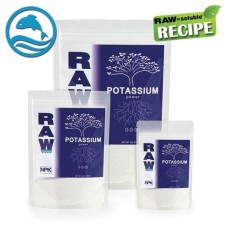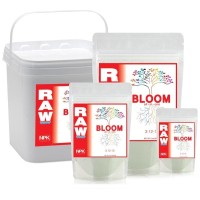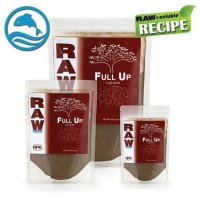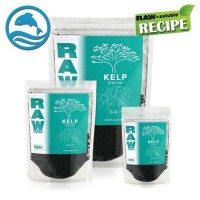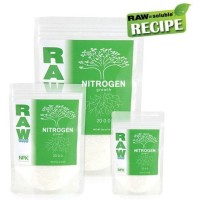Potassium by RAW Solubles
Potassium by RAW Solubles
Product Options
-
£57.95
In Stock
RAW Potassium: 100% Water Soluble Elemental Potassium
Potassium is an essential element for plant growth, and high levels are required during the fruiting and flowering stage. Although potassium isn’t physically part of any plant tissue, it activates many key enzymes for plant growth and reproduction. Typically, a base grow nutrient has one-and-a-half times more potassium than nitrogen, and a bloom formula has at least twice as much potassium as nitrogen. So if a grower can control the potassium to nitrate ratio of the nutrient formula, it is possible to greatly improve the quality of fruits and flowers.
Potassium is the Health Element
During heavy fruiting and flowering, large amounts of potassium can be removed from the nutrient solution in just a matter of days, potentially creating a potassium deficiency! In tomatoes, for example, a potassium deficiency results in watery fruit with low sugar content and poor shelf life. But if the potassium levels are kept high, fruit quality improves. So many growers use a “boost” formula during the fruiting and flowering stage. By adding a little potassium phosphate or potassium sulfate to the top-off water between reservoir changes, the grower puts back in what the plant took out and quality stays high.
Potassium Deficiency appears as Browning of Leaf Margins
A potassium deficiency appears as a “firing” or browning of the leaf margins, often accompanied by brown spots on the leaf. A little potassium sulfate will quickly solve the problem. Just remember that over fertilizing or salt stress can often display the same symptoms. So when in doubt, flush the growing medium with half strength nutrient solution, then mix up a fresh, well-balanced nutrient solution with added potassium. If the problem was caused by a nutrient deficiency, giving the plant a little of what it was lacking will bring it right back. But if the problem was caused by toxic levels of salts, flushing is always a good first aid.
Potassium is Very Important for Carbohydrate Metabolism
Increasing the sugar content in the sap. Sugar content is measured with a brix refractometer. The higher the brix, the higher the sugar contents in the sap and the healthier the plant. So by using a brix meter, it is possible to monitor how efficiently the plant is taking up water and nutrients and diagnose potential nutrient deficiencies before any visible signs appear. Using a brix meter is easy. Just squeeze a couple of drops of sap from the first fully-developed leaf closest to the top of the plant, and read the brix percentage with a brix refractometer. If the brix is too low, simply adjust the potassium to nitrate ratio until the brix is at optimum levels. Higher brix not only produces better quality fruit, it actually helps improve the plant’s natural resistance to pests and disease. In fact, some growers claim that if brix levels exceed 12%, sucking insects won’t even recognize the plant as food!
Like Most Nutrients, However, Balance is the Key
If too much potassium is added, exceeding the plant’s nutritional needs, potassium toxicity can develop. Potassium toxicity shows up as a magnesium deficiency, causing interveinal yellowing on the bottom leaves of the plant, and spreading further up the plant as the deficiency worsens. So if symptoms of magnesium deficiency appear, simply back off on the extra potassium and the leaves will green up. For a faster response, you can mist the bottom leaves with a little magnesium sulphate, as well. Test kits for potassium content in the leaf are also available for spot tests, and many labs can perform a complete tissue analysis for a nominal fee. So it is possible to take all of the guess work out of growing and fine tune the potassium requirement for any plant… maximizing quality and yield!
Directions for Use
Add 1/16 to 1/8 tsp per gallon in reservoir for irrigation. Apply as needed.
Tags: Potassium, RAW, Solubles, Powder, Dry, Nutrients, Individual
Q & A
Be the first to ask a question.

